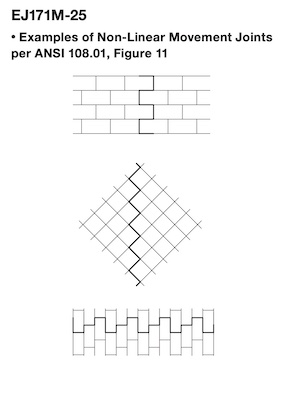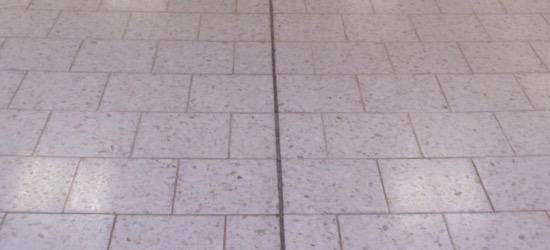QUESTION
The architect is trying to get us to use a 1/8″ soft joint to match the existing grout joints. This is a red flag for me. What is the minimum soft joint we can use in this lobby? They would like to zipper it as well.
ANSWER
The information needed to answer your question about movement joint size can be found in the 2025 TCNA Handbook, EJ171, pages 436-443.
Expansion joints play a crucial role in tile installations for several reasons:
- Thermal Movement: Tiles and substrates expand and contract due to temperature changes. Without expansion joints, stress can build up, leading to cracks or tile detachment.
- Structural Movement: Buildings settle and experience structural movement over time. Expansion joints accommodate this movement, preventing damage to the tile assembly.
- Differential Movement: Different materials (e.g., concrete and tile) have varying rates of expansion and contraction. Expansion joints allow them to move independently without causing issues.
- Preventing Cracks: Expansion joints reduce the risk of cracks by absorbing movement stress. They act as “buffers” between adjacent sections of the tile assembly.
The following information would give us a better picture of the situation to further answer your question – and are aspects of the project to consider:
- Is this project interior or exterior?
- If it is interior, is it exposed to direct sunlight?
- What is the size of the room the tile is being installed in?
- What type of tile is being installed? (Ceramic, porcelain, stone)
- What type of substrate is the tile being installed over top of?
- What are the expected temperature variations the tile assembly will experience over time?

The second paragraph of EJ171 states “Because of the limitless conditions and structural systems on which tile can be installed, the design professional or engineer shall show the specific locations and details of movement joints on project drawings. Preparation of opening left by the tile contractor and installation of backup strip and sealant should be specified in the caulking and sealant section of the job specification.”
As tile contractors, it is not our job to decide the size, location, and how frequently to install movement joints. That said, I’m glad to hear that you are paying attention and are asking these questions now instead of after experiencing a problem.
Depending on the type of movement joint, it is possible to install a soft joint following a zipper pattern as seen on page 443. I would encourage you to review EJ171 and ask the architect these same questions.










